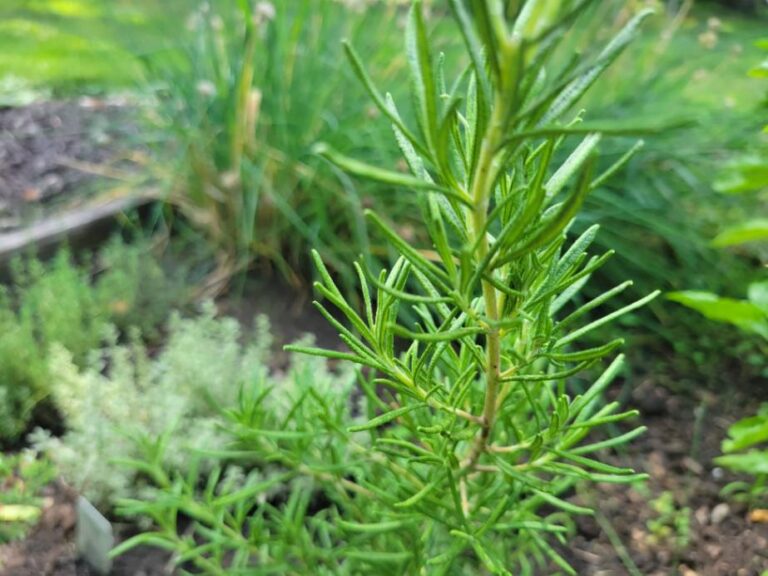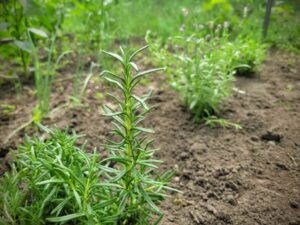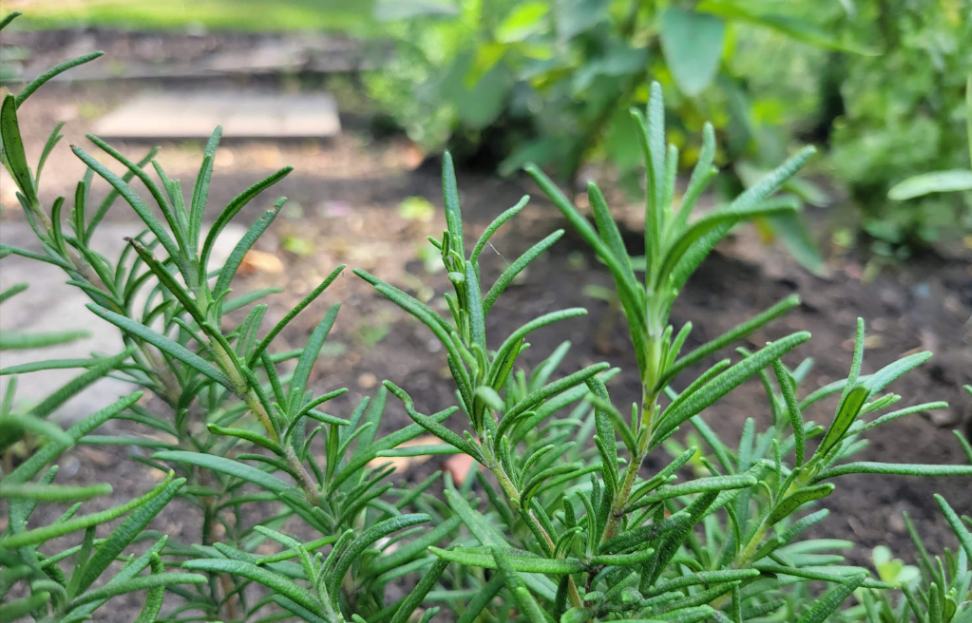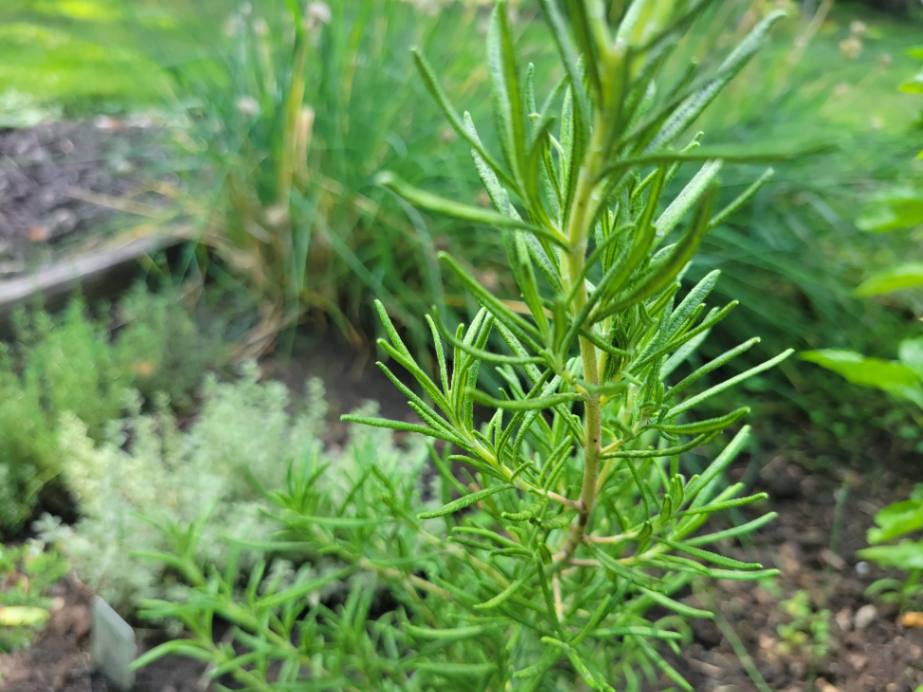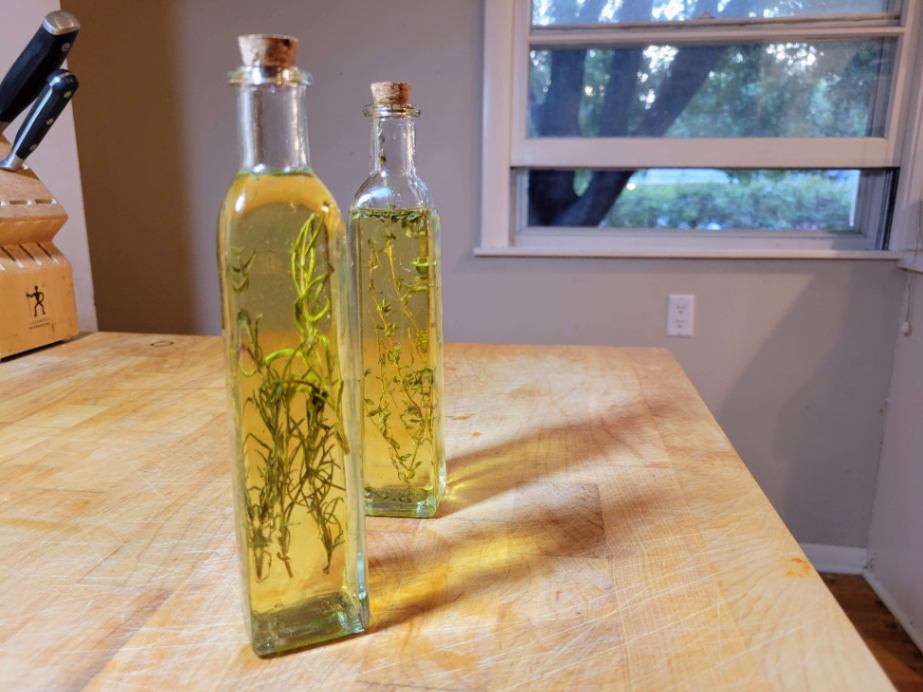This post may contain affiliate links which means I may receive a commission for purchases made through links. I only recommend products that I have personally used. As an Amazon Associate I earn from qualifying purchases. Learn more on my Private Policy page.
Rosemary is a hardy, drought-tolerant herb, with a wide range of culinary uses. Rosemary is fairly easy to cultivate, has numerous potential health benefits, and a fascinating historical context.
Table of Contents
Growing Rosemary
Rosemary is a popular herb that is cultivated in home gardens across the world. It thrives in various climates and requires minimal maintenance, making it an excellent choice for advanced and novice gardeners.
Rosemary’s Soil, Moisture, and Light Requirements
- Rosemary thrives in sandy or loamy soil that allows water to drain quickly. It prefers well-drained soil with a pH level between 6 and 7. Adding organic matter such as compost can improve the soil’s fertility and drainage.
- Rosemary is drought-tolerant once established but requires regular watering during its initial growth phase. Water the plant thoroughly, but avoid overwatering, which can lead to root rot. Letting the top inch of soil dry out before watering again is best.
- Rosemary requires at least six hours of direct sunlight each day. If you are growing rosemary indoors, place it near a south-facing window where it can receive ample sunlight. Insufficient light may result in leggy growth and poor flavor.
Rosemary Companion Planting
Rosemary thrives when planted alongside other drought-tolerant herbs like thyme, oregano, sage, and lavender. It also makes an excellent gardening partner for a variety of vegetables like beans, carrots, and members of the brassica family like cabbage, broccoli, and kale. For
Rosemary Companion Planting: Effortless Garden Pairings
Optimize your garden with rosemary companion planting. Discover ideal plants to pair and those to avoid for a thriving garden. Read More…
Rosemary Can Be Grown Both Indoors and Outdoors
- Growing Rosemary Outdoors: Rosemary is relatively drought-tolerant once established, making it a low-maintenance choice for outdoor landscapes, whether cultivating it in a garden bed, pot, or as part of an herb garden. Plant seedlings or cuttings in well-drained soil with sufficient spacing to allow air circulation.
- Indoor Rosemary Gardening: Growing rosemary indoors allows you to have fresh herbs readily available throughout the year. Choose a well-draining potting mix specifically formulated for herbs and ensure proper drainage by adding pebbles or stones at the bottom of the container. Place the pot near a sunny window or use artificial grow lights for optimal growth.
How to Grow Rosemary from Cuttings
Whether you want to add rosemary plants to your outdoor garden or keep them thriving indoors during the winter, propagating rosemary from cuttings can be a game-changer. Read More…
How to Grow Herbs from Seeds Indoors
Cultivating herbs from seeds can be rewarding and provide an abundance of fresh, aromatic herbs for the home cook. Read More…
Hardiness of Rosemary
Rosemary thrives in hot and dry conditions, making it suitable for Mediterranean climates. It can withstand high temperatures and still maintain its growth and flavor
Rosemary can face some challenges in cold weather, as most rosemary varieties are only hardy in USDA Hardiness Zones 7-10.
A few types of rosemary are more tolerant of colder weather. Varieties such as ‘Arp’ and ‘Hill Hardy’ can withstand temperatures as low as 5°F (-15°C) without significant damage. In colder regions, provide extra protection during harsh winters by mulching around the base of the plant or covering it with a frost cloth.
Types of Rosemary
There are several types of rosemary, each with unique characteristics and flavors. Some common varieties include:
- Common Rosemary (Rosmarinus officinalis): This is the most widely grown variety of rosemary. It has aromatic needle-like leaves commonly used in cooking and herbal remedies.
- Tuscan Blue Rosemary (Rosmarinus officinalis ‘Tuscan Blue’): Known for its intense blue flowers, this variety adds a splash of color to any garden. Its strong flavor makes it ideal for culinary use.
- Hill Hardy Rosemary (Rosmarinus officinalis ‘Hill Hardy’): This type of rosemary is known for its cold tolerance compared to other rosemary varieties.
To learn more about the different types of rosemary you can grow for cooking, check out my article on 7 Types of Culinary Rosemary…
Types of Rosemary: Grow 7 Great Culinary Varieties
From Mediterranean cuisine to grilling and barbecuing, different varieties of rosemary offer unique flavor profiles and growth habits. Read More…
Harvesting and Preserving Rosemary
Harvesting Rosemary
Wait until your rosemary plants have established themselves and have grown to a height of at least 12 inches before harvesting. This typically takes around three months after planting.
Proper rosemary harvesting involves using sharp, sanitized pruning shears for clean cuts. To ensure the plant’s well-being, never harvest more than a third of it in one go. Make sure to harvest soft, flexible stems that are at least 6-8″ (15-20 cm) in length located higher up on the plant. Keep away from the woody base and newly sprouted growth to promote plant vitality.
To dive deeper and learn proper harvesting techniques, check out my comprehensive article on harvesting rosemary…
How to Harvest Rosemary: Useful Garden Hacks
Learn the proper techniques for harvesting rosemary and maximize the flavor and aroma of this homegrown herb. Read More…
Preserving Rosemary
Preserving rosemary allows you to enjoy its flavor and fragrance long after it has been harvested. Depending on your preferences and intended use, you can use several methods to preserve rosemary, including:
- Drying: You can air dry rosemary by hanging small bunches upside down in a well-ventilated area away from direct sunlight. Other drying methods include drying at low temperatures in an oven or air fryer or using a food dehydrator.
- Freezing: Wash and pat dry fresh rosemary sprigs and flash freeze them before placing them in freezer bags or containers. Alternatively, chop the leaves finely and freeze them in ice cube trays with olive oil or water for convenient portioning.
- Infusing Oil: Combine fresh rosemary sprigs with high-quality olive oil in a sterilized jar or bottle. Let it sit for several weeks, allowing the flavors to meld together before straining out the herbs.
How to Dry Rosemary, Sage, Thyme & Oregano: Best Methods
Learn how to dry rosemary, sage, thyme, and oregano using preferred methods like air drying and dehydration. Preserve the natural oils and flavors of your hardy herbs with step-by-step instructions. Read More…
Can You Freeze Rosemary?
Freezing rosemary is a great way to preserve this hardy herb’s fresh taste and color, particularly when using it in dishes that would benefit from using fresh rosemary. Read More…
7 Best Culinary Herbs for Infused Oils (& How to Infuse Them)
Rosemary is one of the best herbs to use for oil infusion. Herb-infused oils are widely employed in culinary applications where oil is a suitable cooking ingredient. Read More…
Preserving rosemary ensures you access its distinct flavor and aroma throughout the year. Whether you choose to dry, freeze, or oil infusion, these methods will help you make the most of your bountiful harvest.
Culinary Uses of Rosemary
Cooking with rosemary imparts a distinctive flavor characterized by earthy, piney, and citrusy notes. This versatile herb enhances the taste of dishes like lamb, beef, and roasted vegetables. Whether fresh or dried, rosemary adds a layer of complexity to your dishes thanks to its distinctive flavor profile.
Fresh Rosemary vs. Dried Rosemary
Fresh rosemary boasts a vibrant and aromatic flavor profile, featuring tender leaves that offer a robust blend of earthiness and pine-like notes. Fresh rosemary is ideal for recipes where the herb’s essence must be infused into the dish, such as when roasting meats or vegetables.
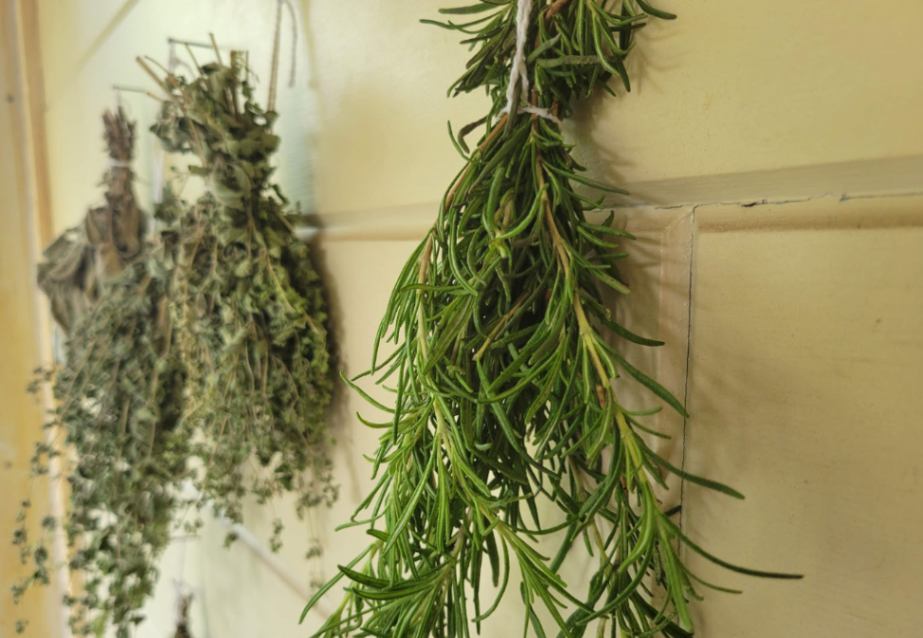
Dried rosemary offers a more concentrated and intense flavor. While it retains some of the earthy and pine notes, it can be more potent and slightly bitter in comparison. Dried rosemary works well in dishes with longer cooking times, like stews and sauces.
Pairing Rosemary with Other Herbs
Rosemary is a versatile herb that harmonizes beautifully with a range of other herbs, elevating their flavors and aromas in culinary applications.
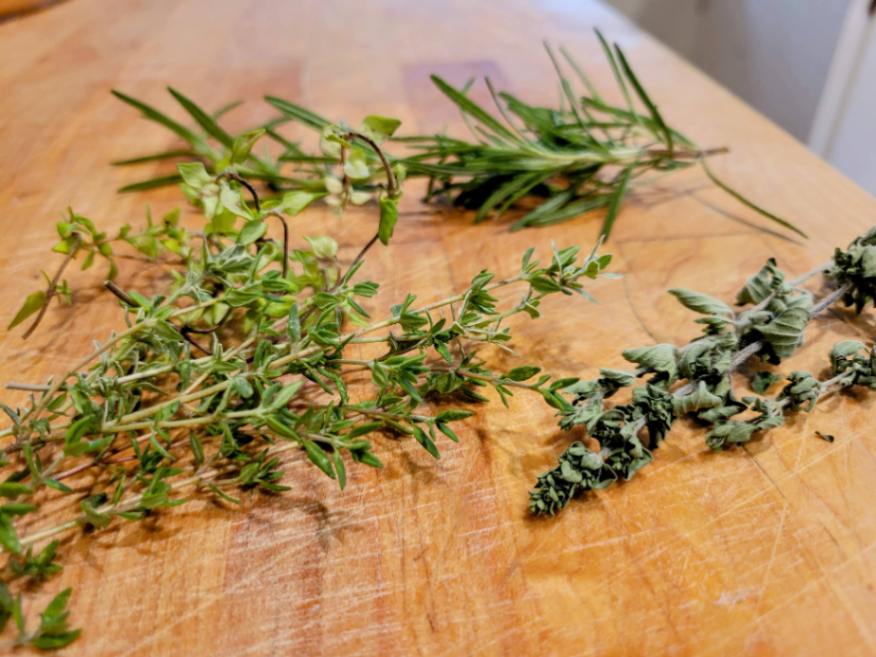
- Thyme: When combined with thyme, rosemary creates a blend of earthy and citrusy notes that work well in roasted meats and poultry dishes.
- Sage: The combination of sage and rosemary adds depth and complexity to savory recipes like stuffings, sauces, and roasted vegetables.
- Oregano: Mixing oregano with rosemary creates a Mediterranean-inspired flavor profile that complements tomato-based dishes such as pasta sauces and pizzas.
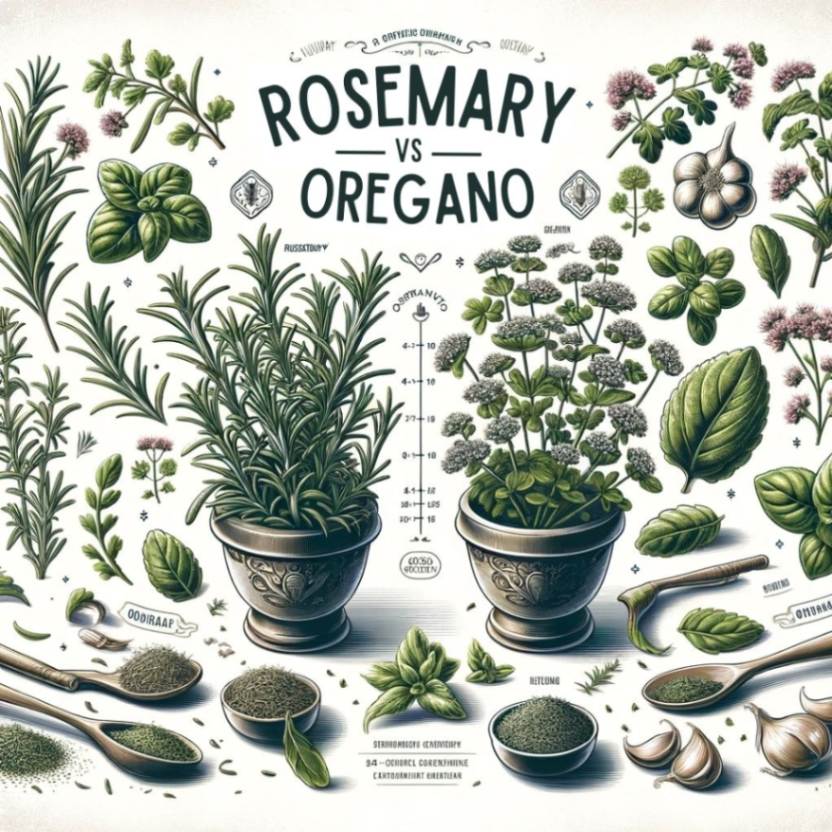
Rosemary vs Oregano: Which to Use When?
Learn the differences between rosemary vs oregano and when to use each in your cooking. Discover their distinct flavor profiles, ideal culinary uses, and tips for growing them in your garden. Read More…
Common Rosemary Culinary Applications
With its distinct flavor and aroma, rosemary is a culinary gem that can elevate a wide range of dishes. Here are some common culinary applications of this versatile herb:
1. Roasted Meats: Rosemary adds depth and savoriness to roasted meat dishes, whether you’re roasting a chicken, a tender leg of lamb, or a juicy beef roast.
2. Roasted Vegetables: Tossing vegetables with olive oil, salt, pepper, and a sprinkle of fresh or dried rosemary can transform ordinary vegetables into something far more flavorful. The herb’s aromatic quality enhances the flavors of potatoes, carrots, and root vegetables.
3. Grilled Skewers Try skewering shrimp, chicken, beef, or veggies with rosemary sprigs and cook them on the grill. The heat releases the herb’s essence and infuses your skewers with its aroma.
4. Baking: Rosemary can be an excellent addition to baked goods like focaccia, scones, or bread. Its herbal twist adds a unique and delightful dimension to your baked goods.
5. Soups and Stews: A few sprigs of fresh rosemary can transform a simple soup or stew into a hearty, aromatic dish. Just remember to remove the woody stems before serving.
6. Marinades and Sauces: Create flavorful marinades for poultry or seafood by incorporating rosemary, olive oil, garlic, and lemon juice. It also lends depth to pasta sauces and gravies.
7. Herbal Butter: Whip up a fragrant rosemary-infused butter to spread over warm bread or use as a finishing touch for grilled steaks and seafood.
Experiment with this aromatic herb and discover how it can transform your culinary creations. The key is to balance its robust flavor to enhance, not overpower, your dishes.
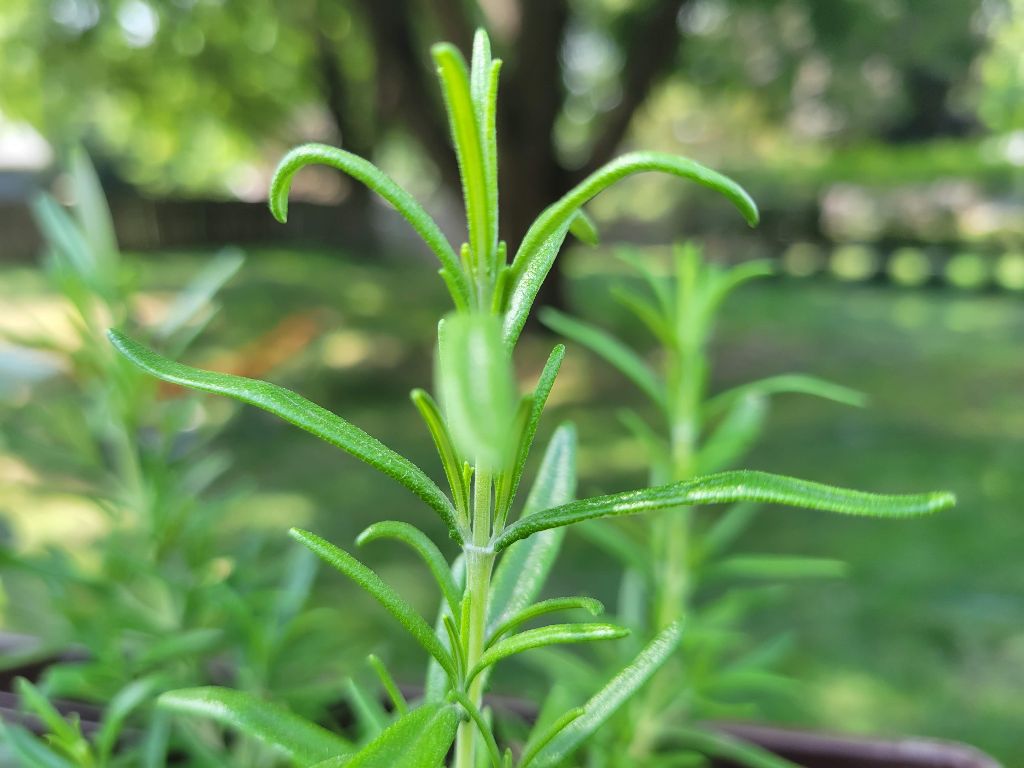
Nutritional and Medicinal Properties of Rosemary
Rosemary is not only a flavorful herb but also has some amazing nutritional properties and potential medicinal benefits. Let’s explore this herb’s various benefits, ranging from aiding digestion to potentially enhancing memory and cognitive function.
Vitamins and Minerals in Rosemary
Rosemary contains essential vitamins and minerals that contribute to overall health.
Rosemary is rich in vitamins A, C, and B6, which are crucial in supporting immune function, promoting healthy skin, and maintaining proper brain development.
Rosemary provides minerals like calcium and iron, which are necessary for strong bones and optimal oxygen transport in the body.
Rosemary as a Digestive Aid
Rosemary has a long history of being employed as a digestive aid, particularly in Europe, where it’s utilized to alleviate indigestion. Its recognition as a digestive remedy is underscored by its approval by the German Commission E, an authority responsible for assessing the safety and effectiveness of herbal remedies.
It’s worth noting, however, that despite this traditional use and endorsement, substantial peer-reviewed scientific research is scarce substantiating rosemary’s efficacy as a digestive aid.
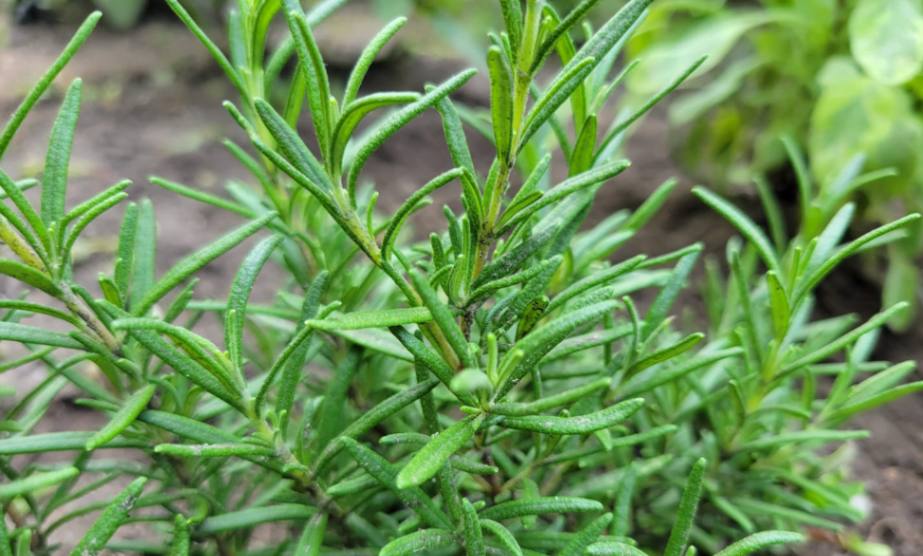
Memory Enhancement Properties of Rosemary
Recent studies have suggested that rosemary may have positive effects on memory and cognitive function.
In a 2012 study, researchers observed that among 28 older adults, the intake of a lower dosage of dried rosemary powder led to statistically significant enhancements in memory speed[1].
In another study from 2018, among 80 adults participating in a study, those who ingested 250 milliliters of rosemary water exhibited a slight improvement in cognitive performance in contrast to those who consumed mineral water[2].
Rosemary and Antimicrobial Activity
Rosemary exhibits antimicrobial activity against various microorganisms such as bacteria and fungi. Research has shown that certain compounds present in rosemary extracts possess antimicrobial activity[3]. These findings highlight the potential use of rosemary as a natural alternative for combating bacterial infections.
Antioxidant Properties of Rosemary
The unique chemical composition of rosemary contributes to its medicinal properties. A key compound found in rosemary is carnosic acid. Carnosic acid has been studied extensively for its antioxidant effects, which may have implications for preventing chronic diseases[4].

Historical Significance and Background of Rosemary
Rosemary has a rich historical significance that dates back centuries.
- Memory-Boosting Legacy in Ancient Times: In ancient Greece and Rome, rosemary was deemed sacred and associated with memory enhancement, believed to enhance cognitive abilities when its scent was inhaled.
- Symbolic Significance in the Renaissance: During the Renaissance, rosemary symbolized remembrance in weddings and funerals and was woven into bridal wreaths and carried by mourners to honor the departed.
- Protective Role in Medieval Europe: Medieval Europe saw rosemary as a symbol of protection, planted around homes to ward off evil spirits and safeguard against the plague.
From ancient civilizations to modern times, rosemary has held a special place in cultural traditions, culinary practices, and medicinal remedies.
Frequently Asked Questions (FAQs)
How do I grow rosemary indoors?
Growing rosemary indoors is possible with proper care. Start by selecting a sunny spot near a window or use indoor grow lights. Plant in well-draining soil and water only when the top inch of soil feels dry to the touch. Prune regularly to maintain shape and encourage bushier growth.
Can I use dried rosemary instead of fresh?
Dried rosemary can be substituted for fresh rosemary in most recipes if you don’t have fresh on hand. Remember that dried herbs are more potent than fresh ones. So adjust the quantity accordingly – typically one-third teaspoon dried equals one tablespoon fresh.
What are the potential health benefits of consuming rosemary?
Rosemary contains antioxidants and anti-inflammatory compounds that may offer several health benefits. It has been associated with improved digestion, enhanced memory and concentration, and reduced inflammation. However, further research is needed to fully understand its effects on human health.
Can I use rosemary oil for hair care?
Rosemary oil is often used in hair care products due to its reputed ability to stimulate hair growth and improve scalp health. You can dilute a few drops of rosemary oil in a carrier oil (such as coconut or jojoba oil) and massage it into your scalp or add it to your shampoo for added benefits.
Are there any precautions or side effects associated with using rosemary?
While generally safe for most people when used in culinary amounts, excessive consumption of rosemary may cause allergic reactions or gastrointestinal issues in some individuals. Pregnant women should avoid consuming large quantities of rosemary due to its potential uterine-stimulating effects. As always, consult with a healthcare professional before using any herb medicinally or if you have specific concerns.
Sources
- Pengelly A, Snow J, Mills SY, Scholey A, Wesnes K, Butler LR. Short-term study on the effects of rosemary on cognitive function in an elderly population. J Med Food. 2012;15(1):10-7. doi:10.1089/jmf.2011.0005
- Moss M, Smith E, Milner M, Mccready J. Acute ingestion of rosemary water: evidence of cognitive and cerebrovascular effects in healthy adults. J Psychopharmacol (Oxford). 2018;32(12):1319-1329. doi:10.1177/0269881118798339
- Laham S.A.A., Fadel F.M. Antibacterial efficacy of variety plants against the resistant streptococcus which cause clinical mastitis cows. AJPRHC. 2013;5:32–41. [Google Scholar]
- Loussouarn M, Krieger-Liszkay A, Svilar L, Bily A, Birtić S, Havaux M. Carnosic Acid and Carnosol, Two Major Antioxidants of Rosemary, Act through Different Mechanisms. Plant Physiol. 2017 Nov;175(3):1381-1394. doi: 10.1104/pp.17.01183. Epub 2017 Sep 15. PMID: 28916593; PMCID: PMC5664485.
Last Updated on 15 December 2023 by Bob Lee

